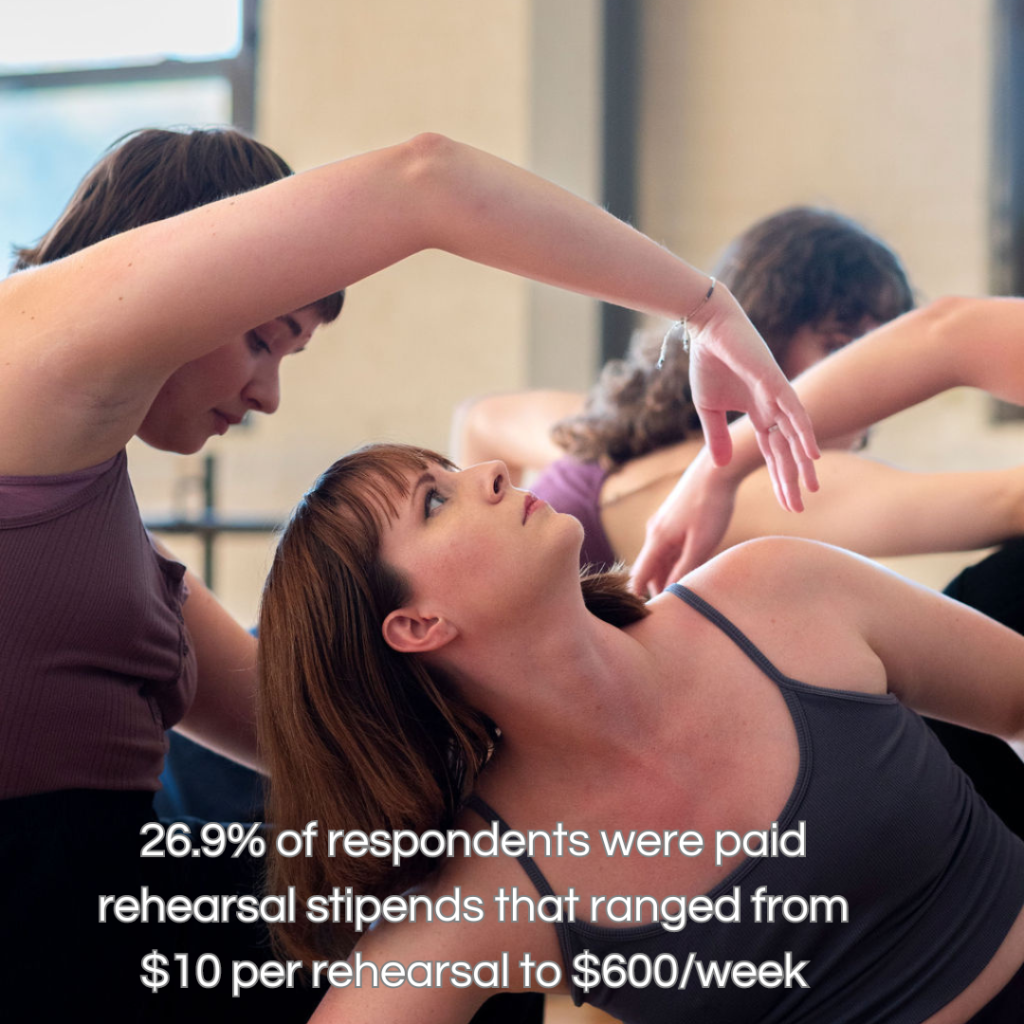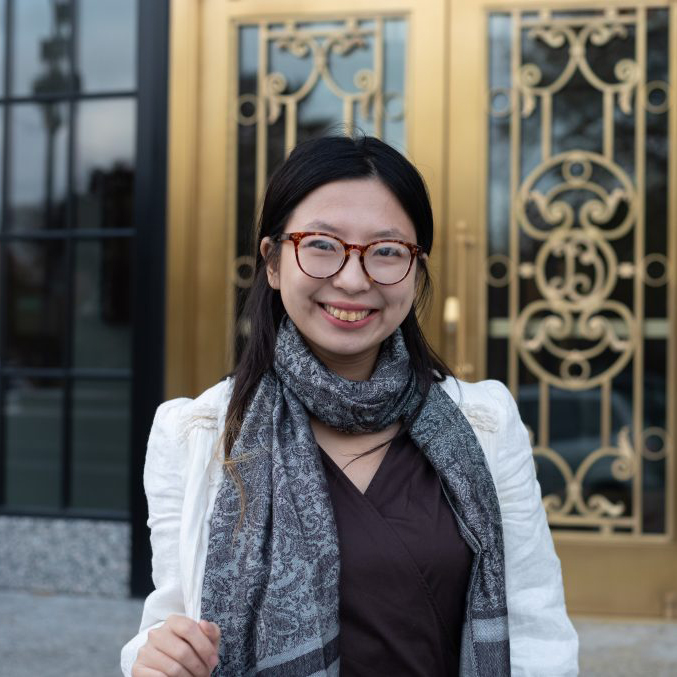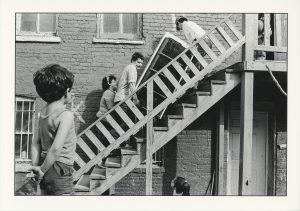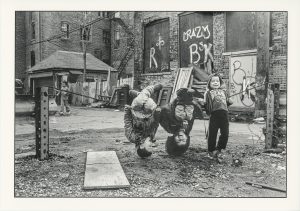In the last few years, dancers from New York City Ballet to The School of America Ballet have spoken up to fight for livable wages and fair compensation. Similar voices can now be heard in Chicago’s dance community echoing calls for equitable treatment.
In 2023, Chicago dance company Darvin Dances started a survey titled the Chicago Dancer Pay Transparency Project1 to help aspiring dancers navigate the audition process and choose the appropriate companies to work with. This survey, spearheaded by Darvin Dances’ founder, Mariah Eastman, was one of the first creatives I befriended when I moved to Chicago in 2022. We’ve spent many nights DMing each other about disproportionate application fees, ambiguous submission guidelines, and creative ways organizations, community leaders, and individual creators can adapt to navigate through the universal funding shortage across disciplines. Witnessing the evolution of the Chicago Dancer Pay Transparency Project, I’ve looked forward to having a conversation with Mariah about the results and impact of the project. Shortly before the publication of the second round of survey data, Mariah and I finally had the opportunity to talk about the importance of accessible information and transparency in the audition and hiring process as well as how it can help empower dancers and bring forward positive changes, paving the way to a more equitable, transparent, and accessible dance world.
This interview has been edited for grammar and clarity.
Xiao Faria daCunha: What made you decide to create the Chicago Dancer Pay Transparency Project?
Mariah Eastman: I was talking to a dancer in my company about what different companies pay dancers. I originally created a list for myself to keep track of Chicago opportunities, such as what companies paid performers and what didn’t. And we were talking about this list, and the dancer said she wouldn’t have known any of the pay information without talking to me. It just made me think: people should know this.
XFD: Agreed.
ME: Back when I was still performing, I would never know about the pay going into an audition. Also, you used to have to pay a fee to audition, so you were paying a fee to be interviewed. Fortunately, that has stopped in Chicago. I think the pandemic helped make that change.
XFD: Interesting. Is there any sort of national-level fair pay database for dancers and performers? For larger companies?
ME: There are dance service organizations such as Dance USA. There’s also The Wage Project, which has a database that helps dance companies determine what’s fair pay for dancers based on their budgets or for dancers to get an idea what they should ask for as their compensation.
XFD: But overall, the pay rate is not something that would be disclosed or openly discussed?
ME: I can’t speak for other performing arts. But in dance, pay is almost never disclosed on audition notices. Not even a pay range. Usually, a dancer finds out either at the end of the audition or when you were given a contract. It is very rare for a company to disclose the pay at the beginning of or during the audition.
XFD: So… the dancer already put all the time and effort in to prepare for the audition, and there isn’t even a guarantee you’ll know the pay rate when the audition is over?
ME: Exactly.
XFD: That seems worse than some job interviews. What do you think is the cause behind this hushedness around pay rates and the extreme lack of transparency?
ME: That’s a hard question to answer, and I can only offer educated guesses. On one hand, most companies face budgetary restraints that strictly limit what they’re able to pay and may not take particular pride in the compensation they can offer. Dancers, on the other hand, may be reluctant to question authority.
XFD: And why is that?
ME: Deference to authority is, to some degree, baked into dance culture. Many dancers begin their training at a young age; I started at age 4. One is not encouraged to question the dance teacher. Particularly in ballet, there is a formal decorum such as having your hair tightly in a bun, wearing a particular uniform, and never “talking back.” So I think there can be a tendency to defer to a dance authority—whether it be a teacher, choreographer, or company director—that may stalk us into adulthood as we start professional careers. Our art form is highly disciplined, and dancers have only felt increasingly more motivated and empowered to speak out in recent years.
When you think about it, arts are political, it’s about speaking up. But I would say things have changed for the better over the last few years. However, we need to keep working on making improvements, especially to ensure that younger dancers aren’t taken advantage of with opportunities that “pay in exposure.”
XFD: Is that what the Chicago Dancer Pay Transparency Project hopes to do? To ensure or at least reinforce that protection?
ME: Yes. And it’s really not about pay shaming, but pay transparency. Some companies are sensitive about their inability to pay their performers what they would like to. But the fact is, if you have a small budget, you won’t be able to pay people a great salary, say, $50,000 a year. But you should be honest upfront so the dancers can make an informed decision whether that opportunity still makes sense for them, versus finding out about the insufficient or lack of compensation later down the road.


XFD: Were there any results that surprised you? Like it came out completely different from what you’d anticipated?
ME: Honestly, none of the stats really surprised me. I just thought it to be quite sad that only 16.3% of dancers reported that they rehearsed 15+ hours per week. Because that indicates how many dancers are able to make performing arts their main profession—that they “made it.”
XFD: So everyone else was below this number? Which, 15 hours is still only part-time, correct?
ME: Correct.
XFD: Wow.
ME: And smaller companies are already struggling to pay for rehearsal spaces and the dancers’ time. These companies simply won’t be able to pay for many hours, either due to a lack of funding or that they must prioritize getting themselves off the ground first—which then results in many dancers working with multiple smaller companies simultaneously, scraping for hours.
XFD: How many of the participants in this project were companies? And how many were individual dancers?
ME: I got 114 responses on the first round of survey, and 68 from the second round, 28 of which were new responses. Most of them were individual dancers. Only 12 companies, including Darvin Dances, my company, filled out the company survey. But I’ll be contacting the companies mentioned to verify the pay results I’ve gathered.
XFD: Gotcha. You mentioned before you made changes in the second round of survey. What changed?
ME: I made some questions more specific based on the first round of results. For example, I asked if dancers were independent contractors versus W-2 employees, since that makes a huge difference. Most dancers are independent contractors. I also modified the format of the questions, reducing fill-in-the-blank questions since those tend to get more commentaries rather than neutral data. And that’s not what this project is looking for.
XFD: Makes sense.
ME: Honestly, the reason I went with a second round is to get more specific data, like the employment type, and how many companies they’re working with simultaneously. These data provide significant insight into the current ecosystem of our dancer community.
XFD: Do you plan on doing any more surveys? Will this become a long-term project?
ME: I want to produce an annual survey each year for the next few years so dancers in the Chicago area can use this resource to become informed [about different company pay models]. For example, one company might pay with rehearsal stipends, the other might be cutting dancers a portion of the ticket sales.
XFD: Is that your end goal?
ME: No. Actually, my end goal is for this to become obsolete at some point as more companies openly publish their pay structure and rates. This project is designed to push the dance community forward. It’s my contribution to help pave the way for other dancers in the future so they can avoid the guessing game. I want dancers to have what they need to make informed decisions, whether it is turning down an audition due to insufficient pay, or accepting a role because of what the company stands for regardless of the pay.


“This project is designed to push the dance community forward. It’s my contribution to help pave the way for other dancers in the future so they can avoid the guessing game. I want dancers to have what they need to make informed decisions, whether it is turning down an audition due to insufficient pay, or accepting a role because of what the company stands for regardless of the pay.”
XFD: Is there anything else you think could be done, at least in Chicago, to help ensure pay transparency?
ME: To acquire fair pay for dancers, we need more funding for the arts. That’s what companies are most dependent on. As for more transparency, I think it’s about building resources available for dancers and then pivoting from there to encourage companies to publish that information openly. Again, what really matters here is giving the dancers the power to make informed decisions. It’s not about how much you pay—my company can’t afford to pay dancers much, either. But you’ve got to be honest from the beginning. And understand that your dancers will be working for other companies at the same time.
XFD: Making them in the know.
ME: Absolutely. Honestly, just ask them: ‘so I can only pay you $200 this month. How does that sound?’ Darvin Dances starts at $150 every two months. That is not very much, but it is what I can afford to pay right now. My rehearsal director gets a little more, $170 every two months. It’s not great, but I make sure it’s in their contract. I also tell them when they will be paid in case they’re setting the money aside for a certain bill.
XFD: So, to sum it up, the transparency creates a safe environment for dancers where they can say yes or no on their own behalf. And that’s what you are trying to do, to give that decision-making power back to the dancers.
ME: Exactly.
- Darvin Dance has provided links to see the questions from each survey round. May Survey: http://e.pc.cd/Akzy6alK. August Dancer Survey: http://e.pc.cd/wUGotalK. August Company Survey: http://e.pc.cd/T9NotalK. ↩︎

About the Author: Xiao Faria daCunha is a practicing visual artist and an independent journalist covering what’s happening in the Midwest belt, focusing on lifestyle, art, and culture. Her visual art practice includes mixed-media illustration on paper, printmaking, and mixed-media collage. Xiao was the former Managing Editor for Urban Matter Chicago and her bylines have appeared in Chicago Reader, BlockClub, BRIDGE.CHICAGO, KCUR, The Pitch KC, and more. Xiao’s artistic and writing practice explores the intimate, vulnerable truth of the BIPOC, migrant, immigrant, and diaspora communities. She considers everything she does art journalism and aims to speak on behalf of those who haven’t been heard and shed light on what hasn’t been seen, whether it’s emotional, cultural, or societal. By weaving her personal experience with public narratives, Xiao creates emotional and engaging conversations to interrogate, challenge, and advance existing perceptions of women, Asian diasporas, and other immigration populations.






